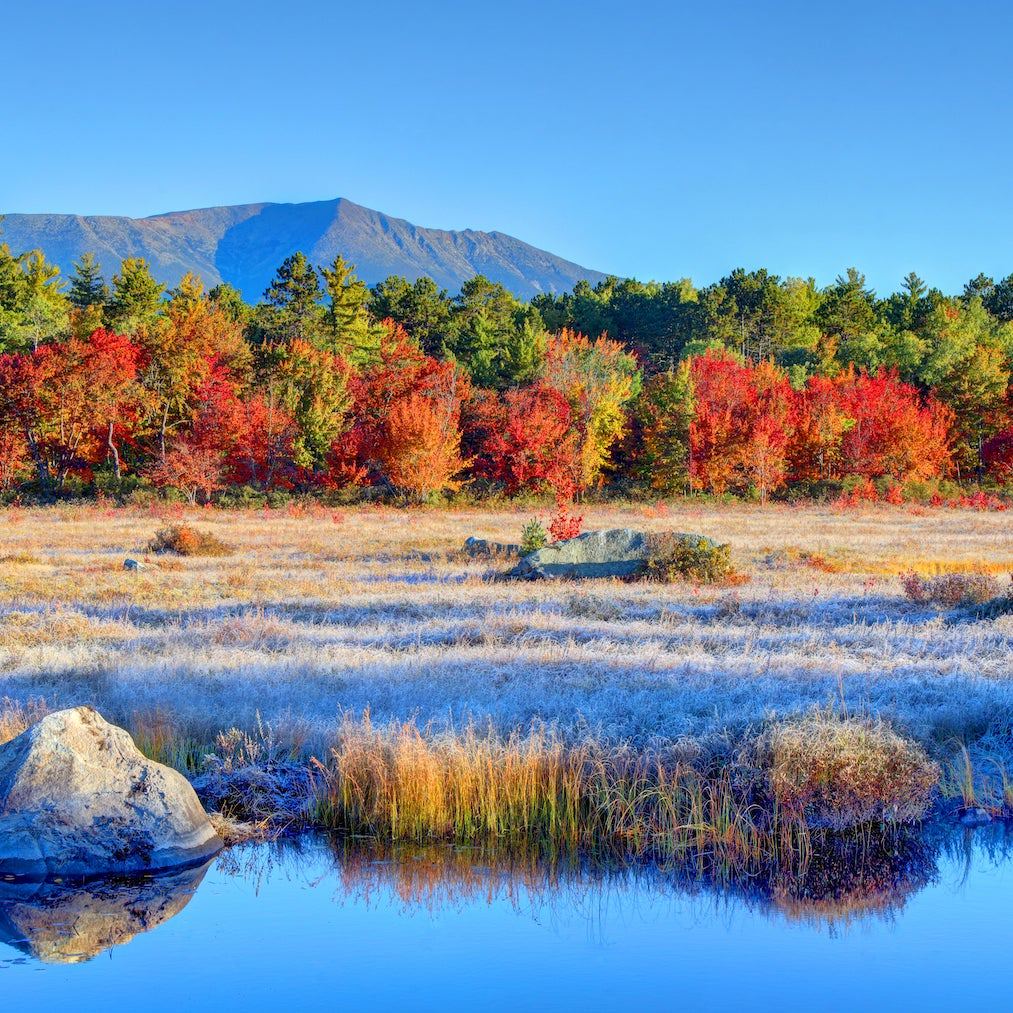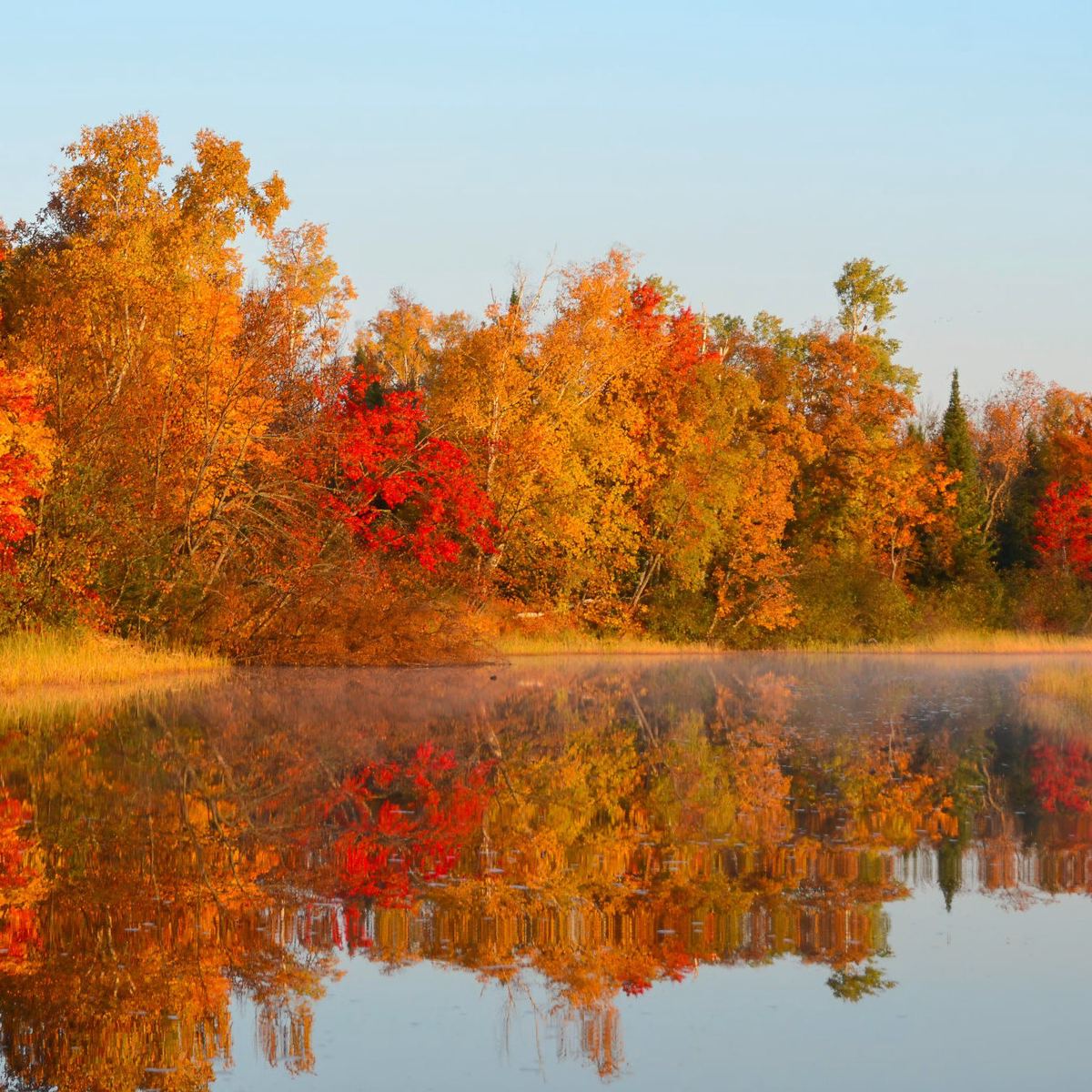I’ve Hiked 10,000+ Miles Around the U.S. These Are My Favorite Trail Towns.
I’ve Hiked 10,000+ Miles Around the U.S. These Are My Favorite Trail Towns.
A safe place to sleep, a good library with air-conditioning, and a bar that feels familiar? These are just some things that make a town on trail feel ideal.
Heading out the door? Read this article on the new Outside+ app available now on iOS devices for members! Download the app.
Before I name my picks for the best trail towns in the United States, I think it’s first necessary to define a trail town, the more broadly the better. A trail town must have enough resources to supply a hiker for a multi-day backpacking trip while also offering easy access to trails or an unfettered landscape long, wide, and wild enough to support such a jaunt. A midsized city with a big, paved greenway is not a trail town, but a community with a single stop sign, a well-stocked gas station, and a way into the desert, mountains, or forest can absolutely be a trail town.
What, then, makes for a quality trail town? Definitions vary, of course, and my list is entirely subjective. I have, however, put in the work—more than 10,000 miles of hiking and three years spent traveling by van—to rank these places. I think of it as a bingo card with the 25 squares filled with criteria like this: Good library? Affordable hotel? Cool bar? Strong coffee? Clean hostel? Decent laundromat? Big burger? Bigger pizza? Walkable or bus-able? No overly draconian laws? Nice people? If even half of your bingo card is full, you’ve got a good trail town.
What follows are the 10 towns, in alphabetical order, that have stuck with me most over the years and miles. These are places that I think about when I remember the joy and difficulty and adventure of heading out with most of my life in a backpack.
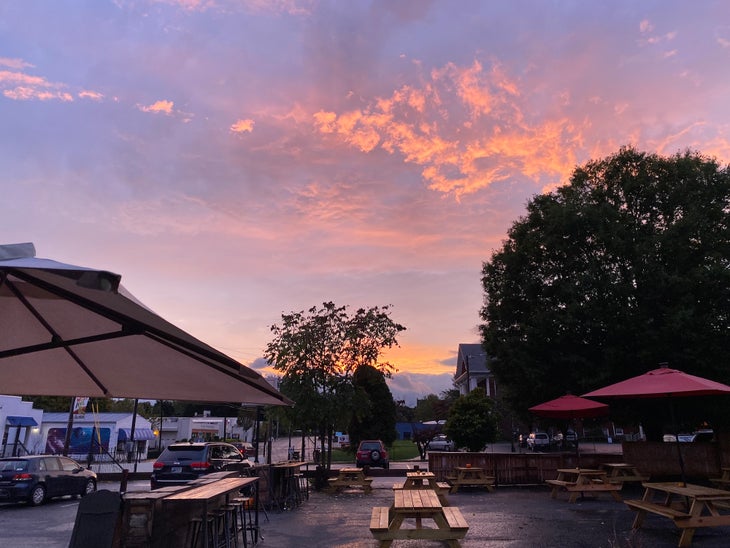
Asheville, North Carolina
There are at least a half-dozen spots in the hiker’s paradise of Western North Carolina that could qualify as emblematic trail towns, from Hot Springs and Marshall along the Tennessee border to Franklin and Brevard on the state’s southern side. But there are few better places to find trails of every length and difficulty than the region’s urban epicenter, Asheville. After all, that iconic Appalachian artery, the Blue Ridge Parkway, cuts inside the city itself several times, making for short hauls to some of the region’s most striking spots like Craggy Gardens, Glassmine Falls, and Mt. Pisgah. The 1,200-mile Mountains to Sea Trail crosses the parkway, while the Appalachian Trail is accessible to the west, north, and south. You can even walk alongside one of the world’s oldest rivers, the French Broad, downtown, before heading to one of the area’s 50 breweries that make the place one of the country’s premier beer destinations. Former resident tip: If it’s been a hot hiking day, have a Burial beer slushie before strolling downhill toward the riverside All Souls Pizza.
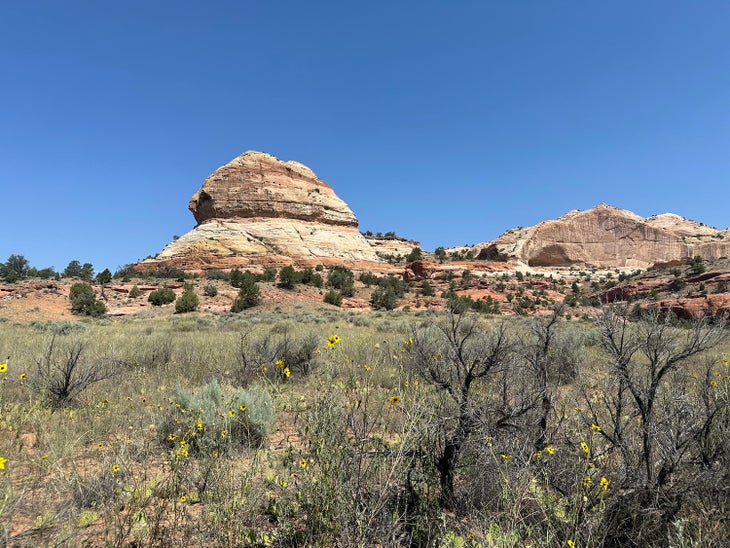
Escalante, Utah
There is perhaps no area in the continental United States more isolated and overwhelming than Grand Staircase-Escalante National Monument, a 1.8-million acre political football that contains some of this country’s true geologic marvels. This seemingly infinite expanse of slickrock is a kaleidoscope of canyons and hoodoos, arches and gorges, rivers and (permits for) The Wave, which is actually in Arizona. Though the hiking is as limitless as your imagination in this southern Utah expanse, maintained trails are very scarce. There’s no better place to ask an expert and get started than the centrally located Escalante, a town so attuned to the outdoors that there is an outfitter per every 400 residents. (One doubles as a delicious pizza restaurant that also has spots to sleep, the other as a heady coffee shop.) Ofland is a swanky place to spend a zero day, with luxe cabins and a drive-in theater, though there are several more modest spots, too. Remember: Escalante is a jumping-off point, an alleyway into a landscape of absolute rapture, so plan your stays as stopovers.
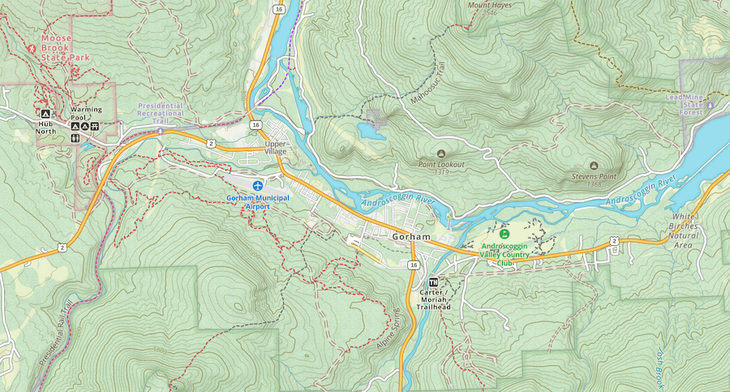
Gorham, New Hampshire
In the summer of 1784, an expedition arrived at the summit of the peak that the crew had already named Mt. Washington, leaving behind an inscribed lead plate to mark the occasion. It was, in some respects, an origin story of American mountaineering. “Everything … sublime and beautiful is here realized,” one member wrote. The town of Gorham wouldn’t exist for another half-century, but only 15 miles away from Washington, it is now a sendoff for escapades into New Hampshire’s sublime, beautiful, and daunting White Mountains. Just west of both the Maine border and the Appalachian Trail, the town of 2,000 (with plenty of lodging, food, and supplies) is also bound by some of the region’s most famous mountains and accompanying high huts—the Presidentials, the Wildcats, Cabot, and so on. You needn’t climb to enjoy the scenery, though: Try the Stony Brook trail just outside of town, or meander near the Androscoggin River along the AT.
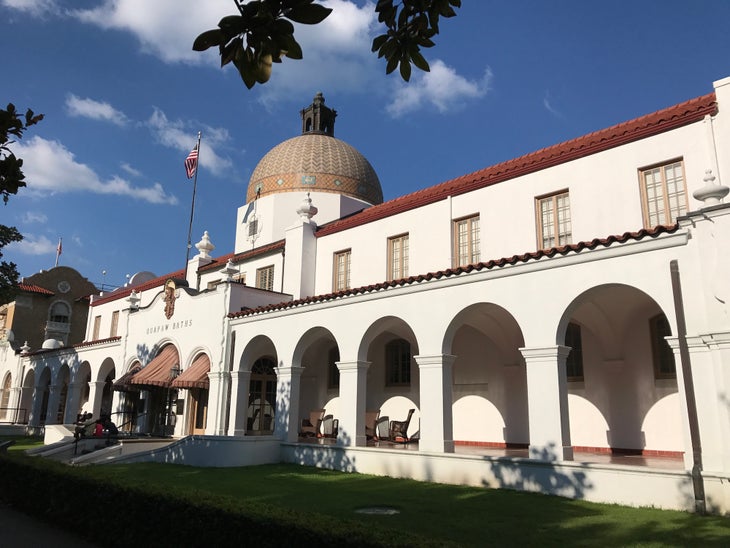
Hot Springs, Arkansas
Every great trail town doesn’t have to be a launching pad for an epic adventure; sometimes, you just want a place with abundant trails and multiple ways to relax. I believe most folks call this a vacation. Hot Springs, Arkansas—one of the most fascinating little cities in the country, with a tangled history of international intrigue, gangsters, and big-league baseball, plus a surprising wealth of Art Deco masterpieces—fits this bill best. It is named, of course, for the thermal water that pours from multiple springs in the surrounding Ouachita Mountains. (You can visit the home of the company that bottles this water with bubbles, too, Mountain Valley.) Speaking of those mountains, the national park here overflows with pleasant hiking, short treks through low-slung, quartz-rich peaks. The orange-blazed Sunset Trail covers a large portion of the small park, while the brief and steep Peak Trail leads to the Hot Springs Mountain Tower, offering an overview of the whole place. Want a longer journey? It’s a 30-minute ride to the 220-mile Ouachita National Recreation Trail, if a relaxing vacation is not actually in your lexicon. Guilty!

Jackson, Wyoming
How, one rightfully asks, can the United States’ second priciest city for housing also be one of its best trail towns? Carefully, and with a measure of gumption. One can easily spend $3,000 per night on a hotel room, but just as easily catch a ride in any direction out of town into the Bridger-Teton National Forest or Grand Teton, where camping is often free and always abundant. (Or, ambitiously, Yellowstone.) The food is phenomenal (and not always ostentatious, like the budget-friendly Pinky G’s or Creekside), and the library is the best of any town on this list. In Jackson, I’ve stayed in the Four Seasons, slept in a van downtown and in trailhead parking lots, and overpaid for the cheapest hotel room around. In every instance, there’s been world-class hiking the next day. Where else can you follow an incredible bike path to a national forest trail that climbs 1,200 feet in less than 2 miles to offer a commanding view not only of the town below but of the country’s most dazzling sweeps of mountains, from the Tetons to the Gros Ventre and beyond?

Leadville, Colorado
Just how seriously does the “highest incorporated city in North America” take hiking? Cradled by three national forests, this wonderfully wild and ragged mining locus is not only the home of the Continental Divide Trail’s yearly southbound soiree, but also the source of the long-distance hiker’s official uniform, the Melly hoodie. The best coffee shop in town, Zero Day, is named for the holy hiker sabbath and doubles as a gear boutique, with a larger outfitter four blocks away. Its welcoming hostel, Inn the Clouds, is a de facto information center. You’re also an easy hitch (or hard run) from Twin Lakes, a portal to Colorado’s highest mountains and loftiest passes. With greasy food and dirtbags galore, Leadville may be the United States’ perfect trail town.

Lone Pine, California
In his beautiful book about traveling by foot in one of the country’s most walkable ranges, The High Sierra: A Love Story, Kim Stanley Robinson identifies the six “good passes” into the Sierra—that is, the places where the work and reward are most commensurate. One of them, Kearsarge, is only 30 minutes north of Lone Pine, a historic hub along Highway 395. Lone Pine is also a little more than an hour from Death Valley, the Ancient Bristlecone Pine Forest, and Mammoth Lakes. The mighty Whitney and Williamson frame this classic Western town on the floor of the Owens Valley, between the Sierra and Inyo Mountains. With a lovingly cluttered gear shop, a surreal grocery store, an enormous hostel, and at least one great bar, Lone Pine is perhaps Eastern California’s best expedition staging area. Don’t forget to tool around the Alabama Hills playground—where scenes from movies like The Lone Ranger and Iron Man were filmed—before you head into the tall stuff.

Marion, Virginia
When thru-hikers talk about essential spots along the southernmost quarter of the Appalachian Trail, they often bring up Damascus, Virginia (“Trail Town, USA,” it calls itself) and Hot Springs, North Carolina (another rare community the trail bisects). But Marion bests them all. With a population just shy of 6,000, this home of the Southern ambrosia called Mountain Dew is large enough to have every resource required for a long trip into the woods—cheap hotels, big grocery stores, a solid outfitter, and a free bus circulator. It boasts easy access to some of Appalachia’s most exquisite hiking spots, with seemingly endless miles of Southern splendor: Grayson Highlands, Mt. Rogers, and Hungry Mother State Park. Before your trip begins or when it ends, head to Marion’s brick-built downtown for some fried stuff at the Wooden Pickle.
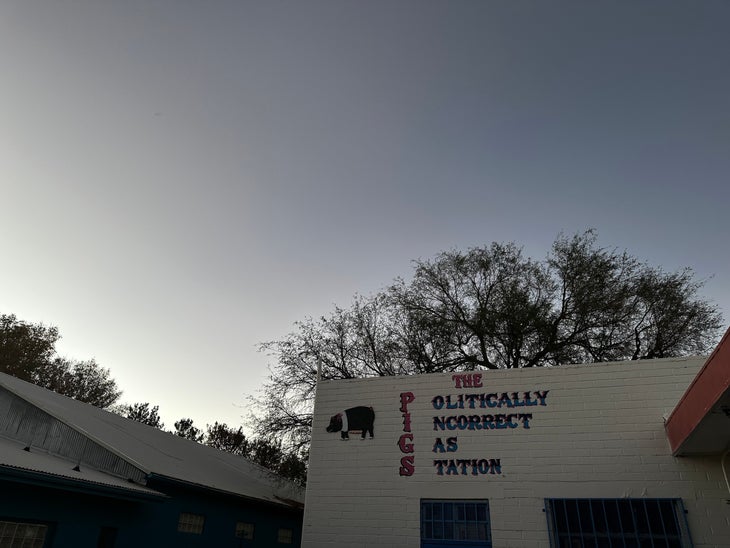
Patagonia, Arizona
The quintessential trail town is not always about what paths intersect there, what forests or parks surround it, or what premium resources it has. Sometimes, it’s just about a vibe, a feeling of comfort you get from a place when you arrive after a long stretch of miles. So it goes for Patagonia, a southern Arizona stopover in the triangle formed between Tucson, Tombstone, and Nogales. There is one hotel, one grocery store, a tiny bakery, a fantastic pizza dive, and a bar and coffee shop that pulls extra duties as a cyclist hang and music venue. That’s about it, but how much more do you really need? (Oh, there’s also a hummingbird observatory, where 257 bird species have been spotted.) Two days before I finished a southbound sprint of the Arizona Trail, the place felt strangely familiar, the sky pink and the people smiling as the sun set. The AZT doesn’t officially pass through here anymore, but take the detour into this wonderful spot for weary legs. Just watch out for the neighborhood javelinas on the way out of town.
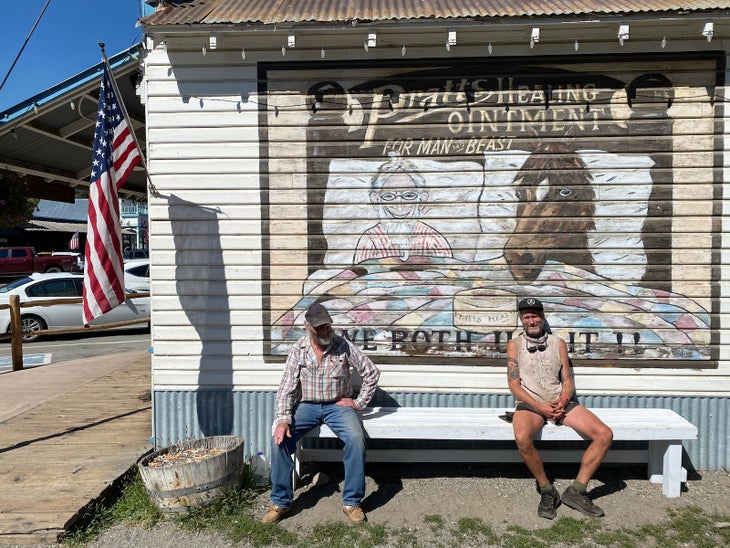
Winthrop, Washington
In 2021, as I neared the northern terminus of the Pacific Crest Trail, one of my trail companions talked more about reaching Winthrop than reaching the Canadian border. It’s the last town before the finish line, and he raved about its weird old Western aesthetic and homey hostels so much that I was prepared to be let down. I wasn’t. Built on the banks of a confluence in Washington’s Methow Valley on the east side of North Cascades National Park, Winthrop is home only to 500 or so people. There are lots of resources, however, because of its hiking, skiing, and fishing tourism. As reported, North Cascades Mountain Hostel is a relaxed gem with a big open kitchen, while Jupiter is an excellent coffee spot with the rare healthy breakfast in this town that loves a greasy spoon. There’s primo thrifting for town clothes, a surprisingly big library, and plenty of spots to sit in cool water. Plus, you’re at the backdoor of some of the United States’ greatest wilderness—and, most important for long-distance hikers, Canada.
From 2024





